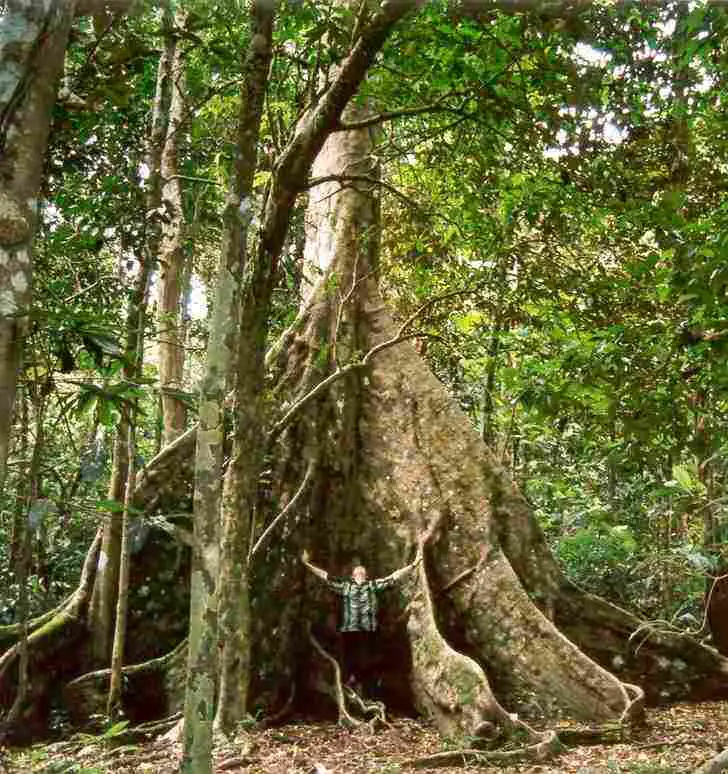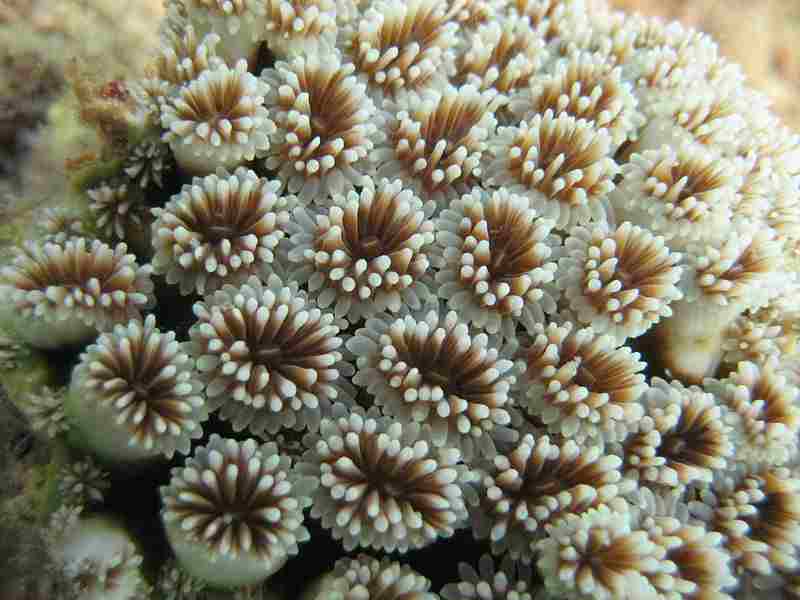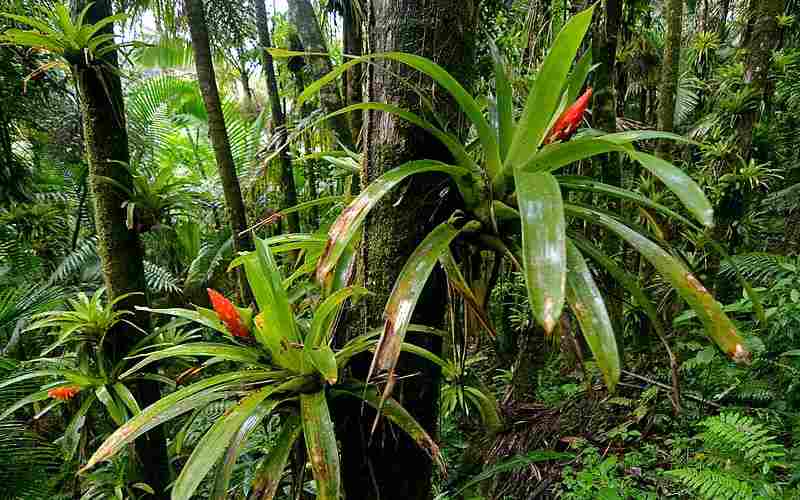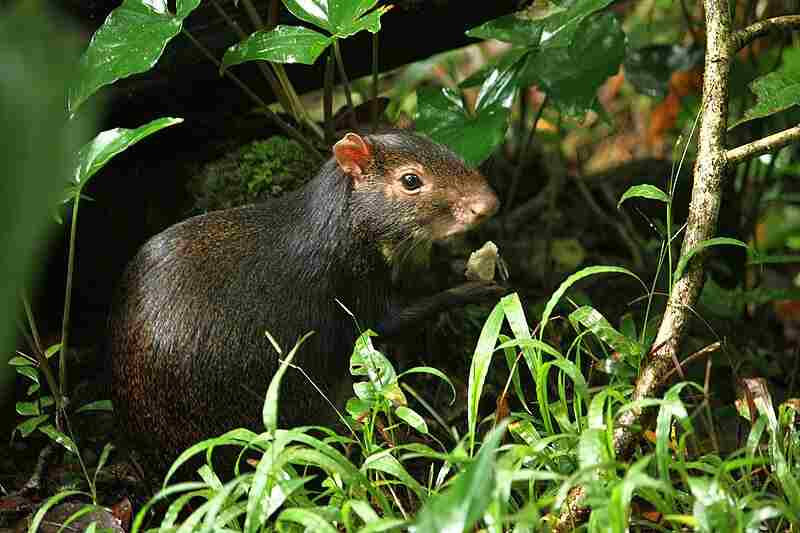The Ecosystem That Rivals Only The Rainforest In Biodiversity: 17+ Amazing Reasons Behind the Immense Diversity of Coral Reefs
Coral reefs are the ecosystems with highest biodiversity on Earth, and the only ecosystems that rival tropical rainforests in biodiversity.
Coral reefs boast high biodiversity due to factors like abundant microhabitats, nutrient-rich environments with sunlight, stability, diverse microhabitats, warm temperatures, efficient nutrient cycling, evolutionary stability, limited disruptions, material recycling, unique niches, resilience through interrelationships, strategic protection, conservation of diversity, island-building, and crucial roles as habitat providers and breeding grounds.
1. Abundant Microhabitats:

Details: Coral reefs comprise intricate structures with numerous microhabitats, such as crevices, branching structures, and coral heads, providing shelter and refuge for a myriad of marine species.
Ecological Implications: The abundance of microhabitats fosters high species diversity as various organisms find niches suitable for feeding, reproduction, and protection from predators.
Effects on Biodiversity: Diverse microhabitats support a wide range of species, promoting symbiotic relationships, competition, and ecological balance within the coral reef ecosystem.
2. High Levels of Nutrients:
Details: Coral reefs benefit from nutrient-rich waters, often associated with upwelling or proximity to nutrient sources, sustaining the growth of both coral and symbiotic organisms.
Ecological Implications: Elevated nutrient levels enhance primary productivity, supporting the foundation of the coral reef food web and contributing to the overall health and vitality of the ecosystem.
Effects on Biodiversity: Nutrient availability influences the abundance and diversity of plankton, algae, and other microorganisms, indirectly shaping the community structure of coral reef organisms.
3. High Levels of Sunlight:

Details: Coral reefs thrive in shallow, sunlit waters, as the symbiotic relationship between corals and photosynthetic algae (zooxanthellae) relies on sunlight for energy production.
Ecological Implications: Adequate sunlight supports the photosynthetic activities of coral symbionts, contributing to the energy budget of the entire reef ecosystem.
Effects on Biodiversity: Sunlight availability determines the depth range suitable for coral growth and influences the distribution of associated species, impacting the composition and structure of coral reef communities.
4. Stable and Non-Extreme Environment:
Details: Coral reefs typically exist in tropical, stable environments with consistent temperature, salinity, and other physical parameters, providing a conducive setting for reef-building corals.
Ecological Implications: Stability in environmental conditions allows for the long-term persistence of coral reefs, facilitating the establishment of complex ecological relationships.
Effects on Biodiversity: The absence of extreme fluctuations fosters the adaptation and specialization of diverse species, contributing to the overall resilience and sustainability of coral reef ecosystems.
5. Variety of Microhabitats:
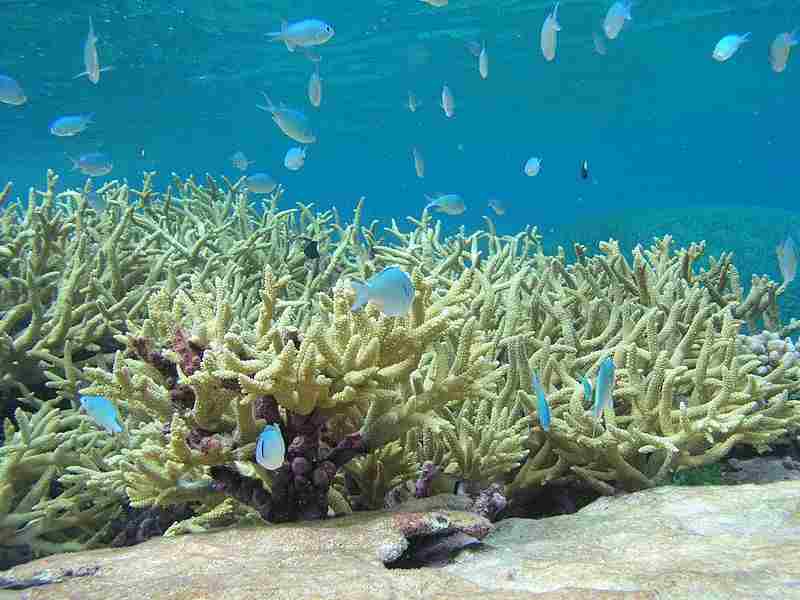
Details: Coral reefs encompass a variety of microhabitats, including coral branches, sandy patches, and rocky outcrops, creating a mosaic of niches for different organisms.
Ecological Implications: The diversity of microhabitats promotes niche specialization, reducing competition among species and fostering coexistence within the coral reef ecosystem.
Effects on Biodiversity: A variety of microhabitats allows for the colonization of numerous species, supporting a rich biodiversity and contributing to the intricate ecological web of coral reefs.
6. Warm Temperatures:
Details: Coral reefs thrive in warm tropical waters, with temperatures typically ranging between 23 to 29 degrees Celsius, creating an optimal environment for the growth of reef-building corals.
Ecological Implications: Warm temperatures support the metabolic processes of coral symbionts, promoting the calcification of coral skeletons and the overall health of the reef ecosystem.
Effects on Biodiversity: The warmth of tropical waters facilitates the diversity of species adapted to these conditions, contributing to the high biodiversity observed in coral reef ecosystems.
7. Efficient Nutrient Cycling:

Details: Coral reefs exhibit efficient nutrient cycling processes, where waste products from one organism become resources for another, promoting nutrient recycling within the ecosystem.
Ecological Implications: Efficient nutrient cycling sustains nutrient availability, contributing to the productivity of the reef ecosystem and minimizing nutrient loss from the system.
Effects on Biodiversity: Nutrient recycling supports the nutritional needs of diverse organisms, fostering a balanced and interconnected community of species within coral reefs.
8. Evolutionary Stability Over Time:
Details: Coral reefs, with their long evolutionary history, have demonstrated stability and adaptability over geological time scales, allowing them to persist through various environmental changes.
Ecological Implications: Evolutionary stability enables coral reefs to withstand natural disturbances and adapt to gradual environmental shifts, contributing to their resilience.
Effects on Biodiversity: The stability over time provides a foundation for the coevolution of species within coral reef ecosystems, shaping the diverse assemblage of organisms present.
9. Limited Seasonal Disruptions:

Details: Coral reefs often experience limited seasonal disruptions, with relatively stable environmental conditions throughout the year, allowing for consistent ecological processes.
Ecological Implications: Limited seasonal disruptions provide a continuous environment for reproductive events, recruitment, and ecological interactions within the coral reef ecosystem.
Effects on Biodiversity: The absence of extreme seasonal variations supports the year-round presence of diverse species, contributing to the stability and sustainability of coral reef biodiversity.
10. Adaptation to Utilize and Recycle Available Materials:
Details: Coral reefs showcase a capacity for organisms to adapt and utilize available materials efficiently, contributing to the sustainable functioning of the ecosystem.
Ecological Implications: Adaptation to local resources promotes ecological efficiency, minimizing waste and enhancing the utilization of available materials within the coral reef environment.
Effects on Biodiversity: Organisms that can adapt to and recycle available materials contribute to the resilience and diversity of coral reef ecosystems.
11. Creation of Unique Niches for Diverse Organisms:
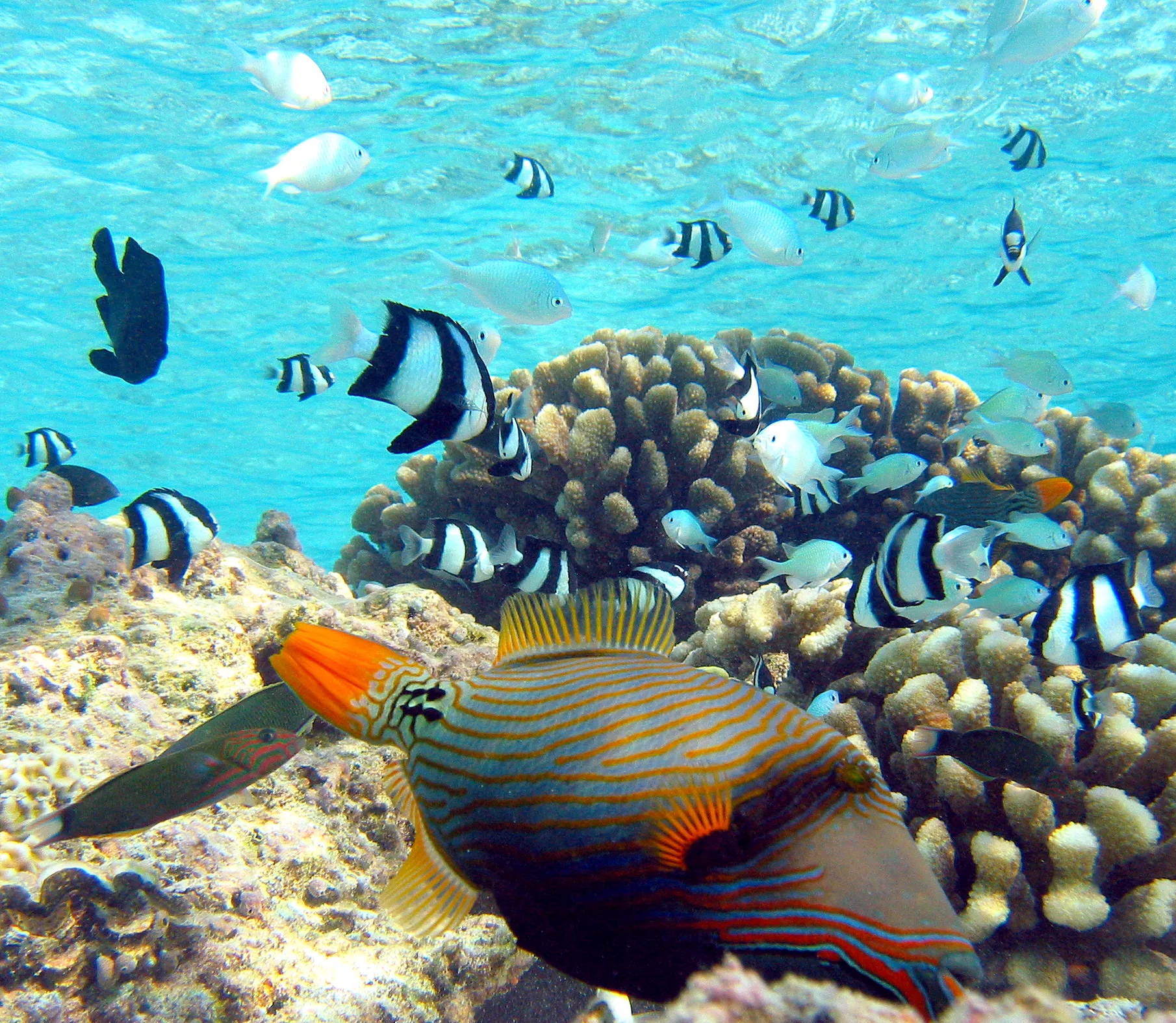
Details: The varied structures and microhabitats within coral reefs create unique niches, fostering a wide array of ecological opportunities for different organisms.
Ecological Implications: Niche diversity promotes species coexistence, reducing competition for resources and facilitating a complex web of ecological interactions within coral reef ecosystems.
Effects on Biodiversity: The creation of unique niches supports the establishment and persistence of diverse species, contributing to the overall biodiversity of coral reefs.
12. Resilience to Disturbances Through Intricate Interrelationships:
Details: Coral reef ecosystems exhibit resilience to disturbances due to intricate interrelationships among species, allowing for recovery and adaptation after events such as storms or bleaching.
Ecological Implications: Complex interrelationships enhance the ability of coral reef ecosystems to recover from disturbances, maintaining stability and functionality over time.
Effects on Biodiversity: The resilience fostered by intricate interrelationships supports the survival and diversity of species within coral reef ecosystems.
13. Strategic Protection Through Marine-Protected Areas:
Details: Establishing marine-protected areas (MPAs) offers strategic protection for coral reefs, limiting human impact, overfishing, and other activities that could harm the ecosystem.
Ecological Implications: MPAs safeguard key habitats and species, allowing for the recovery of damaged coral reefs and maintaining ecological balance within these protected areas.
Effects on Biodiversity: Marine-protected areas play a crucial role in preserving biodiversity by providing sanctuary for diverse species and promoting sustainable management practices within coral reef ecosystems.
14. Conservation of Taxonomic, Genetic, and Phylogenetic Diversity:

Details: Coral reefs contribute significantly to the conservation of taxonomic, genetic, and phylogenetic diversity by hosting a wide range of species with unique genetic and evolutionary characteristics.
Ecological Implications: The conservation of diverse lineages within coral reefs enhances the overall genetic resilience of the ecosystem, supporting adaptation to changing environmental conditions.
Effects on Biodiversity: Coral reefs act as repositories of genetic diversity, playing a crucial role in maintaining the evolutionary potential of marine organisms.
15. Role of Coral Reefs in Building Islands and Atolls:
Details: Coral reefs play a pivotal role in the geological process of building islands and atolls, contributing to the formation and expansion of land masses in tropical regions.
Ecological Implications: The interaction between coral growth and geological processes shapes coastal landscapes, providing unique habitats for both terrestrial and marine organisms.
Effects on Biodiversity: Coral reef-associated land formations create diverse ecosystems, supporting a variety of species adapted to both marine and terrestrial environments.
16. Endless Nutrient Cycling Abilities in Coral Reefs:
Details: Coral reefs exhibit remarkable nutrient cycling abilities, with efficient recycling processes that contribute to the sustained productivity and health of the ecosystem.
Ecological Implications: Continuous nutrient cycling supports primary productivity, benefiting the entire food web and promoting the overall resilience of coral reef ecosystems.
Effects on Biodiversity: The efficient cycling of nutrients within coral reefs sustains diverse trophic levels, fostering the presence and abundance of various species in this intricate ecosystem.
17. Contribution to Genetic Diversity in Marine Ecosystems:
Details: Coral reefs contribute significantly to the genetic diversity of marine ecosystems by harboring a wide array of species with unique genetic characteristics.
Ecological Implications: Genetic diversity within coral reefs enhances the adaptability of marine organisms to environmental changes and influences the overall health and stability of the ecosystem.
Effects on Biodiversity: The genetic diversity supported by coral reefs contributes to the resilience and survival of marine species, maintaining biodiversity in surrounding marine environments.
18. Coral Reefs as Vital Habitat Providers, Breeding Grounds, and Food Sources:
Details: Coral reefs serve as vital habitat providers, offering breeding grounds and food sources for numerous marine species, including fish and invertebrates.
Ecological Implications: Coral reef habitats support the life cycles of various species, providing essential conditions for reproduction, juvenile development, and feeding.
Effects on Biodiversity: The role of coral reefs as habitat providers, breeding grounds, and food sources contributes significantly to the diversity and abundance of marine life, making them crucial ecosystems for coastal and oceanic biodiversity.

